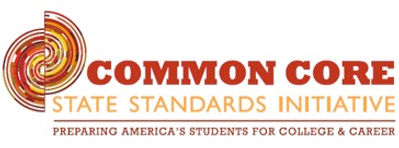 |  |  |
|---|---|---|
 |  |  |
 |  |
Bridging The Educational Gap

The push for academic reform has become more prominent within the last 30 years. There has been a need for standards on a federal level to give all students a fair and high-quality education. Three Acts in the past (National Commission on Excellence in Education, Educate America Act, and the No Child Left Behind Act were passed in a hope that they would bring America’s reputation up as an educational power. When those acts were unfruitful the Common Core State Standards were born in 2009.
In 2001 President George Bush approved the No Child Left Behind Act. On a federal level a school’s success was measured by the success on what the children learned (Morrison, 2014, pg. 143). The NCLB Act made district and states accountable, mandated state standards, enforced testing for grades 3-12, and encouraged research based learning (Morrison, 2014, pg. 143). The program also emphasized the importance of spending federal money on programs that work. Eventually Congress will reissue the NCLB Act but under a new name. The federal Department of Education wants to draft revisions to raise the standards for what we teach our youth. Rewriting this act will end labeling low performing schools that are based off of mathematics and reading standardized tests.
While we wait to see the new draft of the act our attention has shifted to the new standards known as the Common Core State Standards. The Common Core State Standards are, “a set of high-quality academic standards in the mathematics and English language arts/literacy (ELA)” (Common Core Standards Inc. 2015, para. 1). There are six standards.
-
Research and evidence based
-
Clear, understandable, and consistent
-
Aligned with college and career expectations
-
Based on rigorous content and the application of knowledge through higher-order thinking skills
-
Built upon the strengths and lessons of current state standards
-
Informed by other top-performing countries to prepare all students for success in our global economy and society” (Common Core State Standards Initiative, 2015, para. 2).
These standards aim to improve students’ quality of education and diminish the education achievement gap. Forty-two of our states so far have adopted the CCSS and all United State’s territories. These standards were created to accommodate students from all walks of life/disabilities and to get more students to graduate high school. Using CCSS it narrows down the amount of context taught and focuses on the most important topics. Grades 6-8th are the most important math topics learned and narrowing down the topics in math will help students grasp math concepts that they can use the rest of their lives (Pi Roman, 2014).
As mentioned it is very important to raise our nation’s reputation when it comes to education. This will only be done if we successfully enhance the way we teach our students. By setting standards we can assess what children should know and what they currently do. Each child no matter what state they are living in will be taught by using common standards that all states must follow. The CCSS will hopefully lessen our education gap by brining clarity and focus to curriculum. Students will engage in learning through advanced technology that will aid them in the future (Common Core Team, 2015, para. 6). By following standards it provides a foundation for accountability and reform. The federal and state together are in control of student’s education. As mentioned it accommodates every student regardless of race or disability. Every child has the right to quality education and as a nation we must make the Common Core State Standards a priority for every state.
References
Common Core Standards. Preparing America's students for success. (2015). Retrieved October 13,
2015, from http://www.corestandards.org/
Common Core Team. Common Core State Standards. (2015, June 26). Retrieved October 12, 2015,
from http://www.cde.ca.gov/re/cc/
Morrison, G. (2014). You and early childhood education. In Fundamentals of early childhood
education (7th ed., pp. 142-157). Upper Saddle River, New Jersey: Pearson Education.
Pi Roman, R. (Director). (2014). Common Core State Standards for [Motion picture]. United States:
New York City of Education.